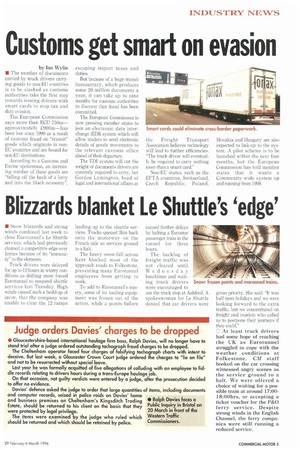Customs get smart on evasion
Page 7

If you've noticed an error in this article please click here to report it so we can fix it.
by Ian Wylie • The number of documents carried by truck drivers carrying goods to non-EU countries is to be slashed as customs authorities take the first step towards issuing drivers with smart cards to stop tax and duty evasion.
The European Commission says more than ECU 750m— approximately .000m—has been lost since 1990 as a result of customs fraud on "transit" goods which originate in nonEU countries and are bound for non-EU destinations.
According to a Customs and Excise spokesman, an increasing number of these goods are "falling off the back of a lorry and into the black economy". escaping import taxes and duties.
But because of a huge transit bureaucracy, which produces some 20 million documents a year, it can take up to nine months for customs authorities to discover that fraud has been committed.
The European Commission is now pressing member states to join an electronic data interchange (EDT) system which will allow traders to send electronic details of goods movements to the relevant customs office ahead of their departure.
The EDT system will cut the weight of documents drivers are currently required to carry, but Gordon Lymington, head of legal and international affairs at
the Freight Transport Association believes technology will lead to further efficiencies. "The truck driver will eventually be required to carry nothing more than a smart card."
Non-EU states, such as the EFTA countries, Switzerland, Czech Republic, Poland, Slovakia and I lungary are also expected to link-up to the system. A pilot scheme is to be launched within the next four months, but the European Commission has told member states that it wants a Community-wide system up and running from 1998.




































































































